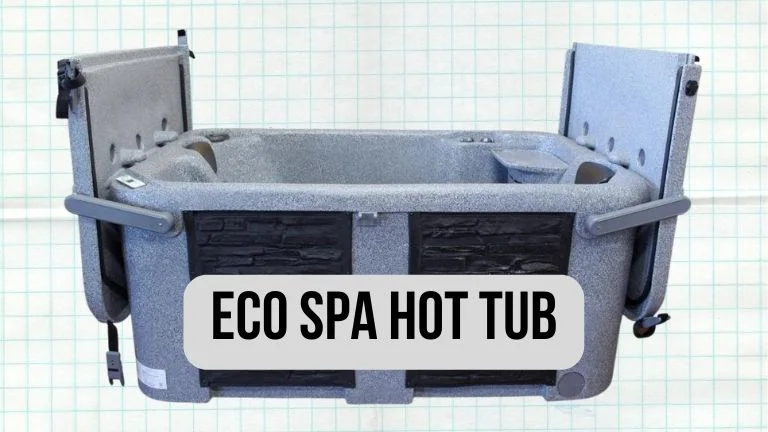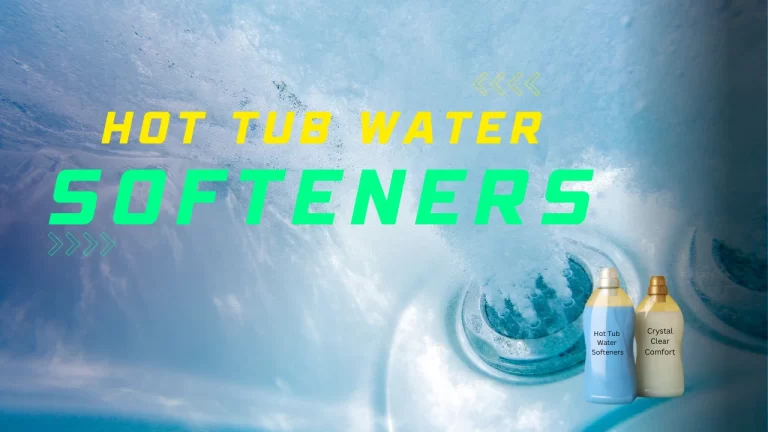Cloudy Hot Tub Water: Quick Fixes to Get Crystal Clear Fast
Cloudy hot tub water usually means there’s dirt, oils, or unbalanced chemicals in your spa. The easiest fix is to rinse or replace the filter, shock the water, and check pH and sanitizer levels.
Keeping filters clean and water balanced helps prevent cloudy water so your hot tub stays clear and safe.
Maintaining clear hot tub water is crucial for both aesthetic and health reasons. Cloudy water can result from various factors, including chemical imbalances, poor filtration, or organic contaminants. Understanding the causes and how to treat and prevent cloudy water effectively can save you time, effort, and frustration.
Understanding Cloudy Hot Tub Water
1. Chemical Imbalances
Your hot tub water is a bit of a science experiment. When pH, alkalinity, or sanitizer levels drift out of the ideal range, the water can get dull and hazy fast. Off-balance water gives bacteria and other contaminants a chance to multiply, which makes everything look cloudy.
2. Poor Filtration
Your filter is the workhorse that keeps the water clean, but it can only do so much. If it’s clogged with hair, oils, or mineral buildup, it won’t catch the tiny particles that make the water look dirty. Sometimes all it takes is a good rinse or replacement to bring back that crystal-clear look.
3. Organic Contaminants
Think about what goes in the water with you, sunscreen, sweat, body oils, even a little dirt. Over time, these can overwhelm the sanitizer and turn your hot tub water cloudy. A quick shock treatment is usually enough to break it down and clear things up.
4. Environmental Factors
Mother Nature can be sneaky. Rain, pollen, dust, and leaves can all land in your hot tub and throw off your water balance. If you have a lot of guests using the spa, that can also stir things up and make the water cloudy faster than usual.
Diagnosing the Problem
Once you understand the common causes of cloudy, hot tub water, the next step is to diagnose the specific issue affecting your hot tub. Proper diagnosis is crucial for effective treatment and swift resolution. Here are the steps to identify the cause of cloudy water in your hot tub:
Testing Water Chemistry
The first and most important step is to test your hot tub’s water chemistry. You should regularly check the pH, alkalinity, and sanitizer levels (such as chlorine or bromine). Here’s how:
- pH Levels: The ideal pH range for hot tub water is between 7.2 and 7.8. Water outside this range can become cloudy and cause skin and eye irritation.
- Total Alkalinity: This should be maintained between 80 and 120 ppm (parts per million). Alkalinity acts as a buffer for pH levels.
- Sanitizer Levels: Ensure that chlorine levels are between 1 and 3 ppm and bromine levels are between 3 and 5 ppm. Low sanitizer levels can lead to bacterial growth and cloudy water.
Test strips or a digital water tester can help you get accurate readings of your hot tub’s water chemistry. Adjust the levels as necessary using appropriate chemicals. My top pick EASYTEST 7-Way Pool Test Strips with best seller and 40k reviews.

Inspecting the Filter System
A clogged or dirty filter is a common cause of cloudy water. Follow these steps to inspect and clean your filter system:
- Turn Off the Hot Tub: For safety, always turn off the power to your hot tub before inspecting the filter.
- Remove the Filter: Carefully remove the filter cartridge.
- Inspect the Filter: Look for signs of clogging, such as debris, dirt, or discolouration.
- Clean the Filter: Use a garden hose to rinse the filter thoroughly. Soak the filter in a filter-cleaning solution overnight for a deeper clean, then rinse again.
- Replace if Necessary: If the filter is damaged or overly worn, replace it with a new one.
Checking for Debris and Contaminants
Physical debris and organic contaminants can sometimes be the primary cause of cloudy water. Here’s what to do:
- Skim the Surface: Using a skimmer net, remove leaves, bugs, and other floating debris.
- Vacuum the Bottom: If debris is settled at the bottom, use a hot tub vacuum to clean it out.
- Check for Oils and Lotions: Body oils and lotions can accumulate in the water, especially after heavy use. Using a spa enzyme treatment can help break down these contaminants.
Treatment Methods to Clear Cloudy Water
After diagnosing the cause of your cloudy hot tub water, it’s time to treat it. Various methods can be employed depending on the specific issue you’ve identified. Here are the most effective treatment methods:
Chemical Treatments:
1. Shock Treatments:
Adding a large dose of sanitizer to the water to kill bacteria and break down organic contaminants.
- Types of Shock: There are two main types of shock: chlorine-based and non-chlorine-based. Chlorine shock is more potent and effective for severe cloudiness, while non-chlorine shock is gentler and suitable for regular maintenance.
- Usage: Follow the manufacturer’s instructions for the correct dosage. Typically, you should shock your hot tub every 1-2 weeks or after heavy use.
- Procedure: Dissolve the shock treatment in a bucket of water before adding it to the hot tub. Run the jets to circulate the water and distribute the shock treatment evenly.
2. Clarifiers:
It help coagulate small particles into larger ones that the filter can more easily capture.
- How They Work: Clarifiers bind together tiny particles that cause cloudiness, making them larger and easier to filter out.
- When to Use: Use clarifiers when your water is mildly cloudy or as a preventive measure.
- Procedure: Add the recommended amount of clarifier directly to the hot tub water, then run the pump and filter for a few hours to clear the water.
3. Balancing Water Chemistry:
Ensuring your water chemistry is balanced is crucial for clear water.
- pH Adjustment: Use pH increasers or decreasers to bring the pH to the ideal range (7.2-7.8).
- Alkalinity Adjustment: Use alkalinity increasers to maintain total alkalinity between 80-120 ppm.
- Sanitizer Levels: Add chlorine or bromine to maintain proper sanitizer levels. Follow the instructions on the product packaging for correct dosing.
Mechanical Solutions
1. Cleaning or Replacing the Filter:
Regular filter maintenance is essential for clear water.
- Cleaning the Filter: Rinse the filter with a garden hose weekly. Soak it in a filter-cleaning solution monthly.
- Replacing the Filter: Depending on usage, replace the filter every 6-12 months or as the manufacturer recommends.
2. Using a Vacuum to Remove Debris:
If your hot tub has a significant amount of debris, use a vacuum designed for hot tubs.
- Procedure: Follow the instructions for your specific vacuum. Typically, you’ll need to submerge the vacuum and use it to remove debris from the bottom and sides of the hot tub.
3. Running the Pump Longer:
Increasing the circulation time can help clear cloudy water.
- Procedure: If needed, run the pump and filter for extended periods, up to 24 hours continuously, to help clear the water more effectively.

Timeframe for Clearing Cloudy Water
The time it takes for your hot tub water to clear up depends on the severity of the cloudiness and the treatment methods used. Here’s a general idea of what to expect:
Immediate Effects: 24-48 Hours
For mild cloudiness, using shock treatments and clarifiers can yield visible results within 24-48 hours. Here’s a typical timeline:
- First 24 Hours: After adding a shock treatment, you should start to see an improvement. The sanitizer will work to kill bacteria and break down organic matter. Running the pump and filter continuously during this period helps circulate the treatment and capture particles.
- 48 Hours: By this point, clarifiers will have helped coagulate fine particles, and your filter will have removed most of the debris. Your water should be noticeably clearer.
Extended Durations: Factors That May Prolong the Process
Factors can extend the time it takes for your water to clear, including:
- Severe Cloudiness: If the water is significantly cloudy, it might take up to a week to see full clarity, even with aggressive treatment.
- Filter Condition: A clogged or worn-out filter will take longer to clear the water. Ensure your filter is clean or replaced as needed.
- Water Chemistry Imbalances: If the water chemistry is significantly off, it may take several days to a week to balance it.
- High Contamination Levels: If your hot tub has been heavily used or exposed to a lot of debris, it may take longer to clear up.
Case Studies or Examples of Typical Clearing Times
Examples to illustrate typical clearing times:
- Example 1: A hot tub with mildly cloudy water due to a slight chemical imbalance cleared up 24 hours after shock treatment and pH adjustment.
- Example 2: A hot tub with moderate cloudiness from organic contaminants took 48 hours to clear after using a clarifier and running the filter continuously.
- Example 3: A hot tub with severe cloudiness due to neglected maintenance took a week to clear. The treatment involved shock, clarifiers, balancing water chemistry, and replacing the filter.
Preventative Measures for Clear Water
Maintaining clear water in your hot tub requires regular upkeep and attention to detail. By following these preventative measures, you can keep your hot tub water crystal clear and avoid the hassle of dealing with cloudiness.
Regular Maintenance Routines
Weekly and Monthly Tasks
Establishing a routine for weekly and monthly maintenance can help prevent water issues.
- Weekly Maintenance:
- Test Water Chemistry: Check pH, alkalinity, and sanitizer levels. Adjust as necessary.
- Shock the Water: Regularly shock your hot tub to break down contaminants.
- Clean the Filter: Rinse the filter with a garden hose to remove debris.
- Skim and Vacuum: Remove any water debris and vacuum the hot tub’s bottom.
- Monthly Maintenance:
- Deep Clean the Filter: Soak the filter overnight in a filter cleaning solution.
- Inspect and Clean Jets: Ensure jets are clean and functioning properly.
- Check for Biofilm: Use a biofilm remover if necessary to prevent bacterial buildup.
Seasonal Deep Cleans
A thorough cleaning every season ensures your hot tub stays in optimal condition.
- Drain and Refill: Completely drain the hot tub and clean the shell with a non-abrasive cleaner. Refill with fresh water.
- Inspect Equipment: Check all components, including the heater, pump, and plumbing, for any signs of wear or damage.
- Replace the Filter: If it’s been more than 6-12 months since the last replacement, consider replacing it.
Tips for Preventing Cloudy Water
Consistent Water Testing and Balancing: Regularly testing and balancing your hot tub water is crucial for preventing cloudiness.
- Test Kits and Strips: Use reliable test kits or strips to check water chemistry at least once a week.
- Adjust Chemicals Promptly: Address any imbalances immediately to prevent the conditions that lead to cloudiness.
Proper Use of Hot Tub Covers: A good cover can protect your hot tub from external contaminants.
- Keep It Covered: Always keep the hot tub covered when not in use to prevent debris, dust, and rainwater from entering.
- Clean the Cover: Regularly clean the cover to prevent mold and mildew growth.
Regular Filter Maintenance: A well-maintained filter is essential for clear water.
- Rinse Weekly: Rinse the filter with a garden hose weekly to remove surface debris.
- Deep Clean Monthly: Soak the filter in a cleaning solution monthly to remove oils and finer particles.
- Replace Annually: Replace the filter every 6-12 months to ensure it remains effective. Free download Printable Cleaning Schedules.
Troubleshooting Persistent Cloudiness
Even with regular maintenance and preventive measures, you might occasionally encounter persistent cloudiness in your hot tub. Here are some troubleshooting tips and advanced solutions to help you address stubborn water clarity issues.
When Initial Treatments Don’t Work
If your hot tub water remains cloudy despite your best efforts, consider these steps:
Recheck Water Chemistry
- Retest pH, Alkalinity, and Sanitizer Levels: Even slight imbalances can cause cloudiness. Ensure that all levels are within the recommended ranges.
- Consider Other Factors: Check for high calcium hardness levels or total dissolved solids (TDS), which can also contribute to cloudiness.
Deep Clean the Hot Tub
- Drain and Scrub: Drain the hot tub completely and scrub all surfaces with a cleaner. Pay special attention to nooks and crannies where biofilm and debris can accumulate.
- Flush the System: Use a hot tub plumbing cleaner to flush out any buildup in the pipes and jets.
Use a Flocculant
- How It Works: A flocculant helps bind small particles together to be more easily filtered out or settle to the bottom for vacuuming.
- Procedure: Add the flocculant according to the manufacturer’s instructions, then run the pump and filter for the recommended duration.
Seeking Professional Help
If cloudiness persists despite your best efforts, it might be time to seek professional assistance:
Professional Water Testing
- Comprehensive Analysis: Professionals can perform a detailed water analysis to identify any issues that might be missed by home test kits.
- Expert Recommendations: Based on the analysis, they can provide specific recommendations for chemicals or treatments needed. Check here and Find a Certified Laboratory for Water Testing.
Hot Tub Service Technicians
- Equipment Inspection: A technician can inspect your hot tub’s equipment for any underlying issues affecting water clarity, such as malfunctioning pumps or heaters.
- Advanced Cleaning: Professionals can access advanced cleaning tools and products that address persistent cloudiness.
Advanced Solutions and Equipment
Consider investing in advanced equipment to help maintain clear water:
Ozonators and UV Sanitizers
- Ozonators: These devices inject ozone into the water, which helps break down contaminants and reduce the need for chemical sanitizers.
- UV Sanitizers: UV light systems kill bacteria and viruses, enhancing water clarity and reducing reliance on chemicals.
Automated Water Care Systems
- Saltwater Systems: Convert salt into chlorine through electrolysis, providing a steady sanitizer level and reducing manual chemical adjustments.
- Smart Water Monitors: Devices that continuously monitor water chemistry and provide real-time alerts and recommendations via a smartphone app. Check out Water Care and guide.













One Comment